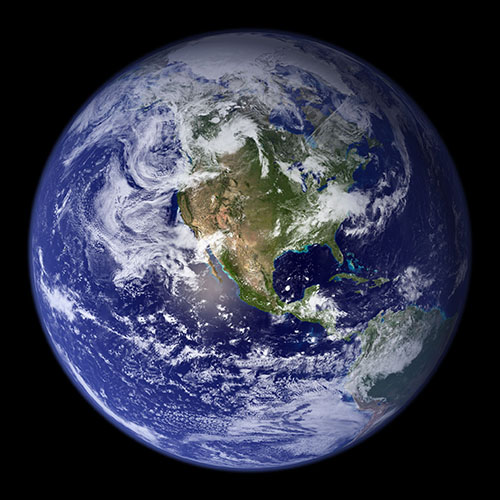Saving the World
The environment does not exist as a sphere separate from human actions, ambitions, and needs… the ‘environment’ is where we live; and ‘development’ is what we all do in attempting to improve our lot within that abode. The two are inseparable.
~ Gro Harlem Brundtland


Blue Marble, Photo: NASA Goddard Space Flight Center,
Image by Reto Stöckli (land surface, shallow water, clouds).
Enhancements by Robert Simmon (ocean color, compositing, 3D globes, animation).
During the late 20th century, the growing consensus on the precarious state of our planet gave rise to a new concept that encapsulated the ideas born from environmentalism, conservation, social justice, and other related movements. Sustainable development or simply, sustainability is traditionally defined as development that meets the needs of the present without compromising the ability of future generations to meet their own needs.
Sustainability as a term was first introduced in a 1987 report by the World Commission on Environment and Development (WCED), a body of the United Nations more commonly known as the Brundtland Commission after its chairperson Gro Harlem Brundtland. Titled, Our Common Future, this report argued for a reconciliation between the need for environmental protection and human social and economic development. The commission drew its inspiration, in part, from the World Conservation Strategy, which outlined the sustainable use of natural resources, including wild species, as a means to assist development. This had been drafted in 1980 by the International Union for Conservation of Nature (IUCN).
In 1992, Rio de Janeiro hosted the U.N. Conference on Environment and Development. A series of international agreements was ratified during this “Earth Summit,” with the goal of countering threats to biodiversity and forestalling climate change. Among these was the commitment to reduce the use of fossil fuels, which is known to contribute directly to the phenomenon of global warming.


.jpg)
.jpg)